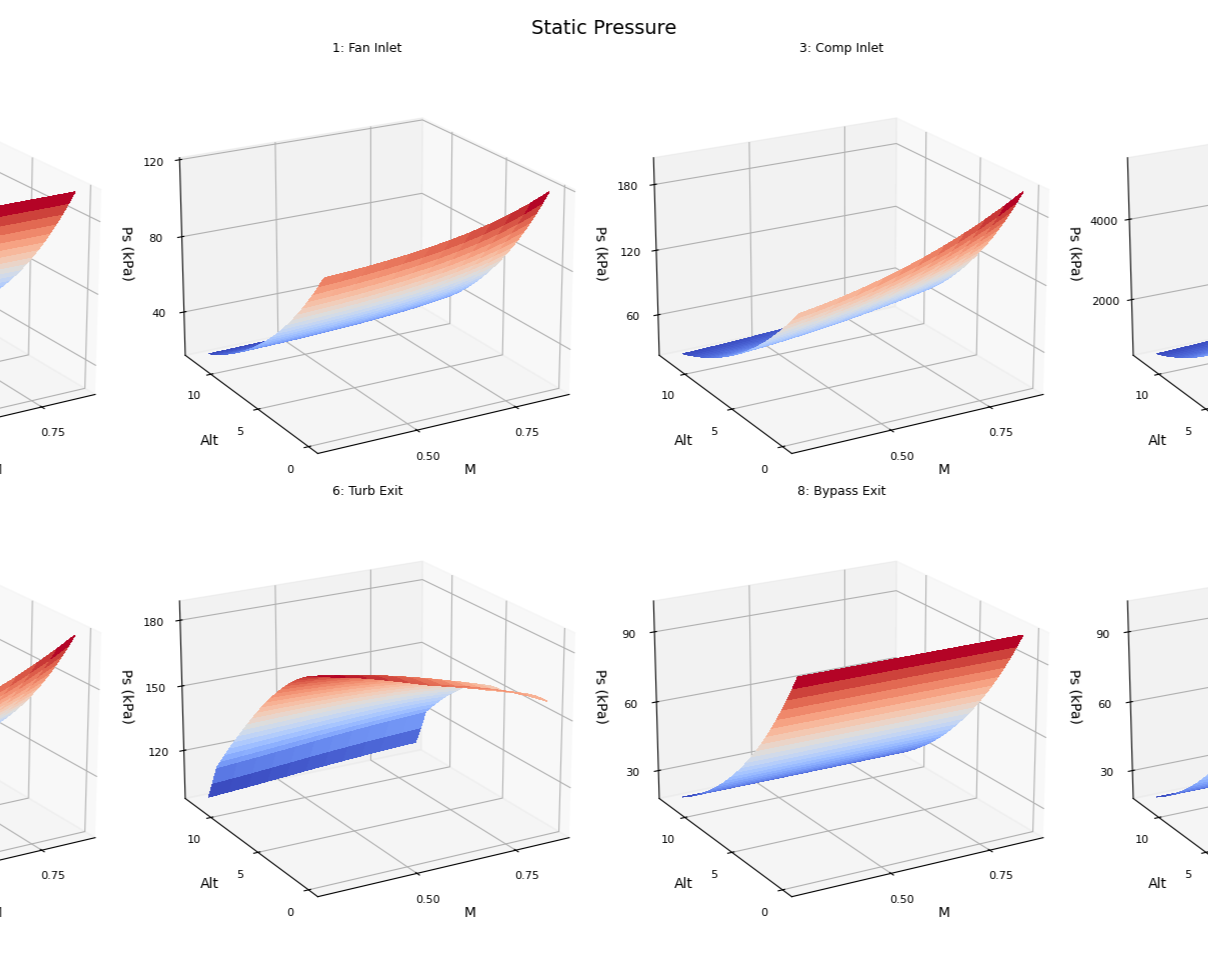
StratoVec Engine Analysis Matrix™: Powering the Future of Propulsion Analysis
Welcome to the cutting edge of propulsion analysis. The StratoVec Engine Analysis Matrix™ (EAM) is a revolutionary software tool designed for aerospace students, engineers, and enthusiasts. EAM provides a sophisticated, yet intuitive, graphical interface for conducting detailed performance analysis on the most common types of jet engines.
Now Available on Amazon!
Get it FAST with Prime Shipping!
What is The Engine Analysis Matrix?
This software provides a sophisticated yet user-friendly graphical interface for conducting performance analysis on various types of jet engines.
It is designed for aerospace students, engineers, and enthusiasts who wish to explore engine characteristics and flight performance metrics.
-
EAM's modular design allows you to launch dedicated analysis for four principal types of jet engines. Each module is tailored with the specific parameters, calculations, and station schematics relevant to that engine type.
Turbofan Analysis
Turbojet Analysis
Turbojet (Afterburner) Analysis
Turboprop Analysis
-
A modern, user-friendly interface designed for an efficient workflow. Animated schematics provide a clear visual reference, while logically grouped parameter panels and real-time console outputs make complex analysis straightforward and easy to monitor.
-
Understand your engine's behavior completely. Generate detailed plots for overall performance and station-by-station properties (Mach number, temperature, pressure). For maximum granularity, export all results to Excel, which provides a full performance summary and dedicated data sheets for every station across the entire flight envelope.

Core Capabilities: A Universe of Analysis at Your Fingertips
The Engine Analysis Matrix™ is built on a foundation of powerful, dedicated modules that provide specialized tools for in-depth analysis.
Integrated directly into the main application window is a robust Flight Range Analysis tool. Based on the fundamental Breguet Range Equation, this feature allows you to quickly estimate the maximum theoretical flight range of an aircraft. By inputting key parameters like cruise velocity, fuel quantity, and aircraft weights, you can gain immediate insight into how engine efficiency and aerodynamic performance translate to real-world range.
-
Conduct comprehensive analysis of two-spool, separate-flow turbofan engines. This module allows you to determine engine size based on a target thrust, perform extensive off-design analysis, and visualize detailed thermodynamic properties at every station in both the core and bypass streams.
-
Analyze conventional, single-spool turbojets with precision. This tool sizes the engine's inlet and nozzle based on a specified thrust requirement and then calculates performance metrics (Thrust, TSFC) across a full flight envelope.
-
Delve into the high-performance world of afterburning turbojets. This advanced module features a multi-stage design process that not only sizes the engine for dry thrust but also automatically refines its internal geometry to ensure physical viability across a wide flight envelope, both with and without the afterburner engaged.
-
Model and analyze single-spool turboprop engines, where the turbine drives both the compressor and a propeller. EAM calculates the critical power split, accounting for propeller and gearbox efficiencies, to deliver both thrust-based (TSFC) and power-based (PSFC) performance metrics.
-
Go beyond simple calculations. EAM first sizes the engine's geometry to meet your specific performance requirements at a single design point. It then uses this fixed geometry to perform a complete analysis sweep across a wide range of altitudes and Mach numbers.
-
The afterburner and turboprop modules employ advanced, multi-stage sizing processes. This includes dry thrust scaling, wet throat sizing, and an anti-choke geometry correction to ensure the engine design is physically viable across its entire operational range.
-
To achieve higher fidelity, EAM does not assume constant gas properties. It uses temperature-dependent models for the specific heat (Cp) and ratio of specific heats (gamma) for both air and hot gas combustion products, ensuring greater accuracy, especially in high-temperature sections.
Key Features: Engineered for Excellence
The Engine Analysis Matrix™ is packed with features designed for accuracy, efficiency, and a superior user experience.
Explore More Features Below!
From Concept to Cruise: Analyze, Optimize, and Innovate with Unprecedented Speed and Fidelity.
Gone are the days of cumbersome, multi-software workflows. EAM integrates everything you need into a single, powerful platform. Whether you are sizing an engine for a new aircraft concept, exploring the performance envelope of an existing design, or simply learning the intricacies of gas turbine engines, the Engine Analysis Matrix™ is your all-in-one solution.
Who is the Engine Analysis Matrix™ For?
Aerospace Engineering Students: A powerful educational tool to bridge the gap between textbook theory and practical application. Visualize engine cycles, understand parameter sensitivity, and conduct project-level design studies.
Propulsion Engineers: An invaluable tool for preliminary design and analysis. Quickly evaluate different engine concepts, perform trade studies, and estimate performance for new aircraft designs.
Aviation Enthusiasts & Pilots: Explore the performance of your favorite aircraft engines. Understand how factors like altitude, speed, and engine settings impact thrust and fuel consumption.
Academic Information
Useful academic information can be found here. This includes student sponsorship information.
White Papers: Sample Calculations, Theories, Use-Cases, Learn More About the Math & Science Behind Jet Engine Analysis!
User Manual: Learn more about how the Engine Analysis Matrix works.
Student Sponsorship Applications: We want to work with you! StratoVec will sponsor your student design teams, and provide you with our world class software, FREE OF CHARGE!
Technical Specifications
Ensure your system is ready to run the Engine Analysis Matrix™.
Operating System: Windows 10 or newer
Disk Space: 1GB for installation
Memory (RAM): 4 GB or more recommended
Get Started with the Engine Analysis Matrix™ Today!
Unlock the next generation of jet engine analysis. The Engine Analysis Matrix™ is distributed as a user-friendly installer. Purchase your license today to begin exploring the limitless possibilities of propulsion performance.
Contact us
Interested in working together? Fill out some info and we will be in touch shortly. We can’t wait to hear from you!







